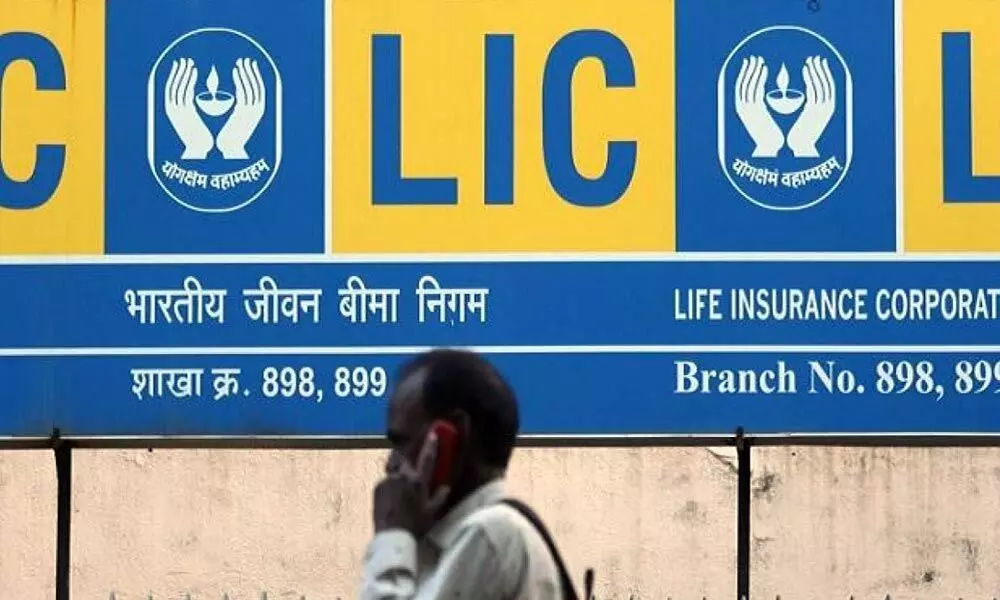2022 likely to be a year of firsts for insurance space
Govt will push for privatisation of a state-owned general insurance company as well as pursue the mega initial share sale of LIC in 2022
image for illustrative purpose

New Delhi: With the amended general insurance business legislation, the government will push for privatisation of a state-owned general insurance company as well as pursue the mega initial share sale of LIC in 2022. Moving ahead with the proposed first-of-its-kind initiatives will make the relevant announcements made in the 2021-22 Union Budget a reality even as concerns over the pandemic situation and its possible impact on the recovering economy persist.
The General Insurance Business (Nationalisation) Amendment Act, 2021 to allow privatisation of state-run general insurance companies was approved by the Parliament in August this year and later came into force. There are four general insurance companies in the public sector - National Insurance Company Ltd, New India Assurance Company Ltd, Oriental Insurance Company Ltd and the United India Insurance Company Ltd. The amended legislation has removed the requirement that the central government should hold not less than 51 per cent of the equity capital in a specified insurer.
Also, it provides for allowing greater private participation in public sector insurance companies and enhancing insurance penetration and social protection, among other objectives. In the 2021-22 Budget, Finance Minister Nirmala Sitharaman had announced a big-ticket privatisation agenda, which included two public sector banks and one general insurance company. The government expects to mop up Rs 1.75 lakh crore from sale of stakes in public sector companies and financial institutions this fiscal.
LIC IPO As part of the divestment strategy for the financial sector, the government has decided to go for the mega Initial Public offering (IPO) of Life Insurance Corporation of India (LIC) in the current fiscal. However, there are fears that LIC listing may be pushed beyond March 2022 as the valuation of the state-owned behemoth is taking more than anticipated time and preparatory work is still far from complete. Valuation of LIC is a complex process because of its size, product mix, real estate assets, subsidiaries and profitability sharing structure, and the size of share sale depends on the valuation.
Post valuation, a number of regulatory procedures needs to be complied with. In July, the Cabinet Committee on Economic Affairs (CCEA) gave its in-principle approval for the listing of LIC. The government has already appointed 10 merchant bankers for the transaction. To facilitate the listing of LIC, the government, earlier this year, made about 27 amendments to the Life Insurance Corporation Act, 1956. As per the amendments, the central government will hold at least 75 per cent in LIC for the first five years post the IPO, and subsequently hold at least 51 per cent at all times after five years of the listing. Currently, the government owns 100 per cent stake in LIC. The authorised share capital of LIC shall be Rs 25,000 crore divided into 2,500 crore shares of Rs 10 each, as per the amended legislation.
Up to 10 per cent of the LIC IPO issue size will be reserved for policyholders. Once listed, LIC is likely to become one of the biggest domestic companies by market capitalisation with an estimated valuation of Rs 8-10 lakh crore. * Industry performance India has maintained its 10th rank in the world in the life insurance segment. India's share in global life insurance market was 2.90 per cent during 2020, according to the latest annual report of Insurance Regulatory and Development Authority of India (Irdai).
Life insurance premium in India increased marginally by 0.6 per cent (-1.2 per cent inflation adjusted real growth) in 2020 whereas global life insurance premium reduced by 3.1 per cent (-4.4 per cent inflation adjusted real growth). In non-life insurance business, India is ranked 14th in the world and the country's share in global non-life insurance market was 0.77 per cent in 2020. Insurance penetration and density are two metrics, among others, often used to assess the level of development of the insurance sector in a country. While insurance penetration is measured as the percentage of insurance premium to GDP, insurance density is calculated as the ratio of premium to population (per capita premium). Insurance penetration in the country increased from 3.76 per cent in 2019-20 to 4.20 per cent in 2020-21, registering a growth of 11.70 per cent, the report said. The country's insurance density remained the same during 2019-20 and 2020-21 at the level of $78. The level of insurance density has reported consistent increase from $11.50 in 2001-02 to $64.40 in the year 2010-11. Life insurance industry recorded a premium income of Rs 6.29 lakh crore during 2020-21 as against Rs 5.73 lakh crore in the previous financial year, registering a growth of 9.74 per cent. During 2020-21, the life insurance industry reported a profit after tax of Rs 8,661 crore as against Rs 7,728 crore in 2019-20. (PTI)

